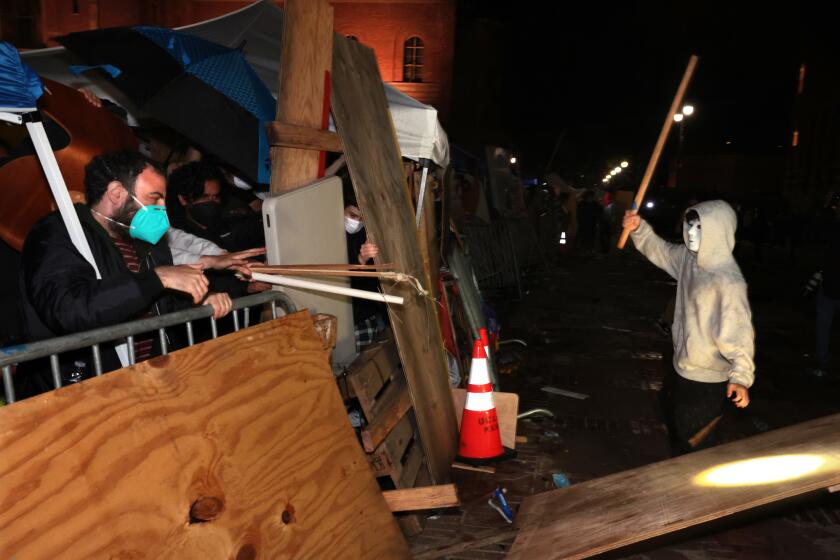UCLA Linked to Computer Virus at Northridge
The computer virus that is now wreaking havoc at Cal State Northridge may have come from UCLA, where it has been isolated and controlled, campus officials said Tuesday.
The virus, known as nVIR, is a computer program that is spread from machine to machine by a common computer disk and disrupts functions, such as word processing and printing. It was discovered at UCLA 2 months ago and appeared last week at Cal State Northridge, where officials say it is rapidly spreading.
A Northridge professor may have brought the bug over from UCLA, Northridge spokeswoman Ann Salisbury said Wednesday. “We have a number of professors who are involved in research projects at UCLA. One of them could simply take a disk infected with the virus from there, bring it here and work on the computers here, and not even know they’re infected.” UCLA computer consultants and Scott Prewett, the manager of the school’s computer rental center, said about 80 students and faculty reported the presence of the virus.
The virus is “relatively benign,” according to Pieter Lechner and Don Worth of UCLA’s microcomputer office.
The bug is different from more damaging computer viruses because it does not erase information stored on computer disks, computer consultants say.
Hard to Detect
The worst effect is that individual computers are stalled until the virus is located and removed.
But because regular malfunctions of the computer can also cause a program to run more slowly or stop, the virus is difficult to detect, said Lechner, a senior programmer analyst.
“Most people won’t know they’re infected,” he said.
Worth said UCLA was probably infected for 10 days without knowing it.
Because the viruses are computer specific, only Macintosh models at UCLA were affected. In Northridge, at least a dozen of the school’s Macintosh computers have been infected, school officials said.
At UCLA, the virus affected computers in the microcomputer support office, a university-run center where people can experiment with computers and get advice on software. It also hit the rental center, where students can rent time on computers, the bookstore’s computer department and the engineering department, Lechner said. Apparently no data has been lost, though, Worth said.
After a couple of days of reprogramming and installing protective software, the virus was brought under control, Lechner said.
Prewett said the computer rental center is checking its computers several times a week and not allowing people to use their own software.
However, there’s no way to tell how many people have disks that might be carrying the virus. “It could be (spread by) some friend just swapping software with someone,” Worth said.
The virus originated in West Germany, and the person who discovered it wrote to other users more than 9 months ago, warning them of it and describing it, Lechner said.
The virus consisted of several components. “It was like shipping out all the pieces of a nuclear bomb, and saying, ‘Don’t assemble it,’ ” Worth said.
Uncertain Origin
How UCLA caught the bug is unknown, Worth said. “It’s like trying to say where you caught a cold. We didn’t actually see the sneeze,” he said. However, the consultants guess that one or more people with infected disks used the university’s machines and infected them.
Ads in the Daily Bruin and notices in the computer support office’s newsletter have advised people to make backup copies of clean files, to beware of software of unknown origin and to check their disks with programs that can sniff out viruses.
Infected programs have to be purged and clean programs copied from original disks, Worth said.
“It may be a blessing in disguise,” Worth said of the virus, because it may “heighten people’s awareness of viruses in general in a situation that may not be a worst-case. . . . A lot of people thought that viruses were just a myth. We’re trying to pass the word around that they’re not.”
More to Read
Start your day right
Sign up for Essential California for news, features and recommendations from the L.A. Times and beyond in your inbox six days a week.
You may occasionally receive promotional content from the Los Angeles Times.






